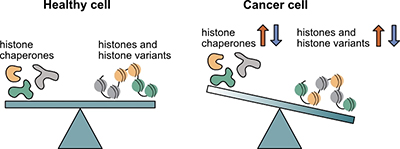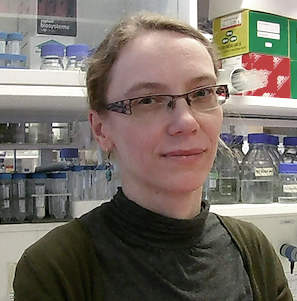Magdalena Murawska
Histone chaperones in health and disease
Chromatin, composed of DNA wrapped around histone proteins, is the fundamental structure that organizes the genome and regulates essential processes such as gene expression, DNA replication, and repair. In cancer, the expression of chromatin components, including histones and their variants, is frequently altered. Overexpression of histone genes, in particular, has been linked to increased cell proliferation and genomic instability, such as aneuploidy.
Histone chaperones are a diverse group of proteins that bind histones and mediate the assembly and disassembly of nucleosomes. By ensuring the correct spatial and temporal incorporation of histones and their variants into chromatin, they maintain genome stability and preserve epigenetic states. When misregulated, these chaperones can disrupt chromatin structure and contribute to tumor development and progression.

Our Research
Our lab investigates the molecular mechanisms of oncogenic histone chaperones, with a particular focus on their roles in chromatin dynamics and regulation. To study these processes, we use a multidisciplinary approach combining genomics, AI-assisted biochemistry, genetics, CRISPR-Cas9 genome editing, and advanced microscopy. We perform experiments in both Schizosaccharomyces pombe (fission yeast), a powerful model organism with conserved chromatin biology, and in human cancer cells to assess the conservation and functional significance of our findings.


